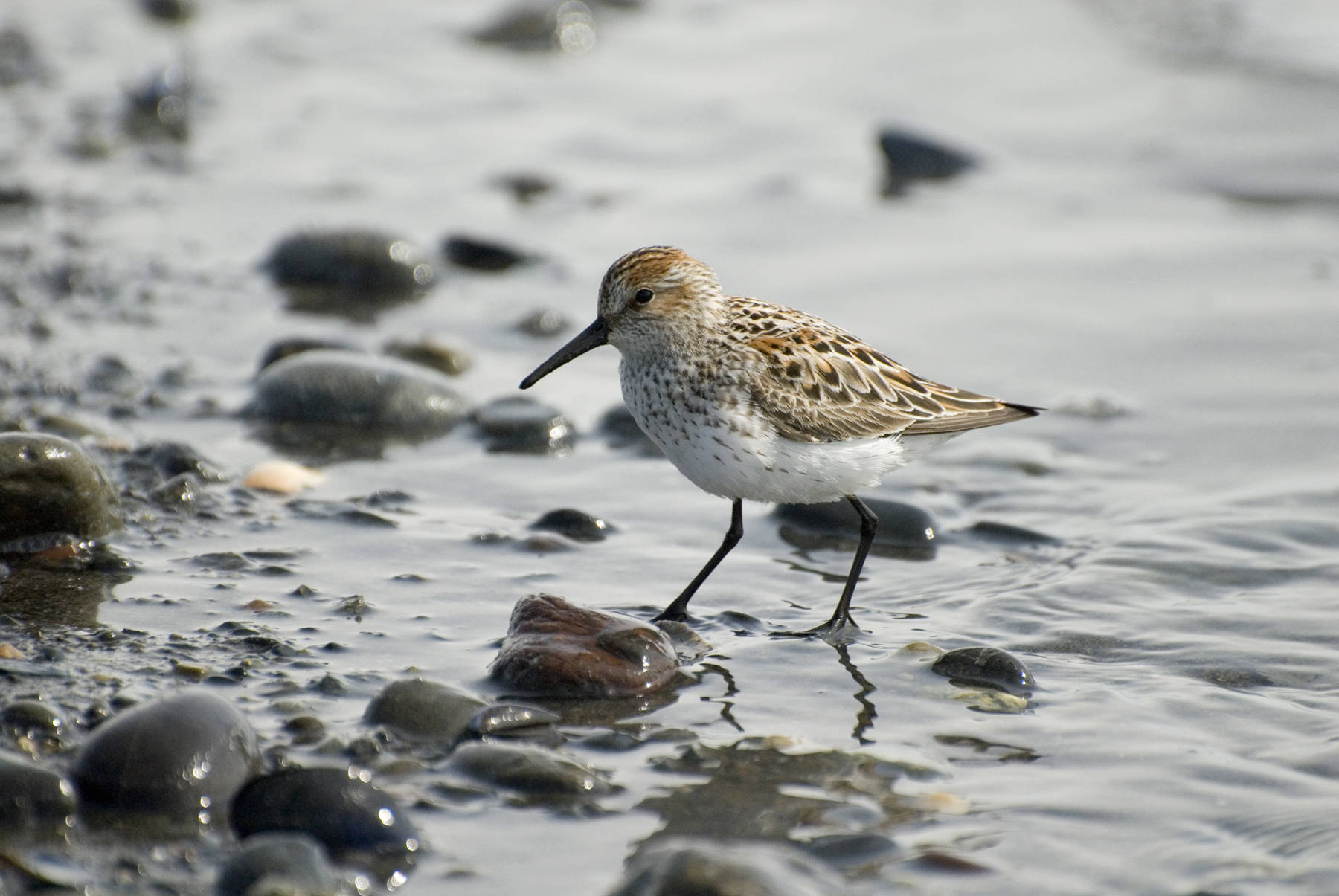Following is the latest in a series of articles about birds and birding, celebrating The Year of the Bird, with authors from Kachemak Bay Birders.
They began arriving in Homer nearly a month ago, as early as mid-April. Their arrival came well before our tourist season and went largely unnoticed. They’ve pretty much had the Homer Spit all to themselves. These early visitors appeared in small but ever-growing numbers, beating the tourist rush, as they do every year. It isn’t until early May that most of the town begins to pay attention to our prolific annual visitors, the shorebirds. Their arrival has been celebrated with the Kachemak Bay Shorebird Festival for the last 27 years. We celebrate their beauty, their numbers, and we celebrate the return of spring in the form of chattering birds filling our skies, beaches and wetlands. With the help of the largest wildlife festival in Alaska, most of us notice their arrival, but how many of us consider what they went through to get here and how important Kachemak Bay is to them?
If you’ve been to Hawaii in the winter you’ve likely seen Pacific golden-plovers on the lawns around the hotels, ball fields, and golf courses. Known in Hawaii as the Kolea, they leave Hawaii each spring to make a direct flight to coastal Alaska. They are motivated by the food-rich tundra of western Alaska, the perfect place to raise hungry chicks. This incredible non-stop flight to our shores takes between three and four days. These plovers are some of the earliest shorebirds to arrive in Homer. Arriving here in late April, they’re eager to refuel on the rich shores of Kachemak Bay.
The most numerous shorebird species to pass through Homer, the western sandpiper, is in full force by the first week in May when flocks of several thousand, occasionally tens of thousands, can be seen whirling over Mud Bay and along the Homer Spit. Weighing just under an ounce, these sparrow-sized shorebirds make the trip to Homer from wintering grounds as far away as Panama. Unlike the Pacific golden-plover, western sandpipers need to make a number of stops along the way to survive their dangerous trip. They make the northbound migration over the course of several weeks, stopping to rest and eat at rich coastal wetlands along the way. Kachemak Bay is one such habitat, a critical linkage in the chain of habitats which allows the western sandpiper to cross the globe to its breeding grounds in western Alaska.
Every migrant has a story to tell, but few are as awe-inspiring as that of the bar-tailed godwit. While not at all common here, a few of these stately shorebirds do make it to Homer. When they do, birders celebrate them for their beauty and their rarity. There are, however, other more compelling reasons to admire this world traveler. Without the ability to land on water or even to glide for long periods, these birds make the longest known non-stop flight of any bird. Some bar-tailed godwits wintering in New Zealand depart for their breeding grounds in Alaska via a non-stop flight of nearly 6,000 miles to the shores of the Yellow Sea, an incredible journey that takes about nine-days.
After several days of refueling on the mudflats of China and the Korean Peninsula, the godwits continue to their breeding grounds in the Russian Far East and western Alaska. That’s only half of the story. After the breeding season in Alaska, many will then depart for their wintering grounds on an even longer non-stop flight. One tagged individual made the southbound journey from the Avalon Peninsula in western Alaska to New Zealand, a non-stop flight of 7,258 miles!
Each tired, feathered individual that lands on our muddy shores represents an incredible journey that has repeated itself for millennia. Every flock is itself a collection of amazing stories that we hope will continue to be told for millennia to come.
Aaron and his wife, Robin, own and operate Wilderness Birding Adventures from their home east of Homer. They lead trips throughout Alaska and believe that Alaska’s best birding is right here in Kachemak Bay



